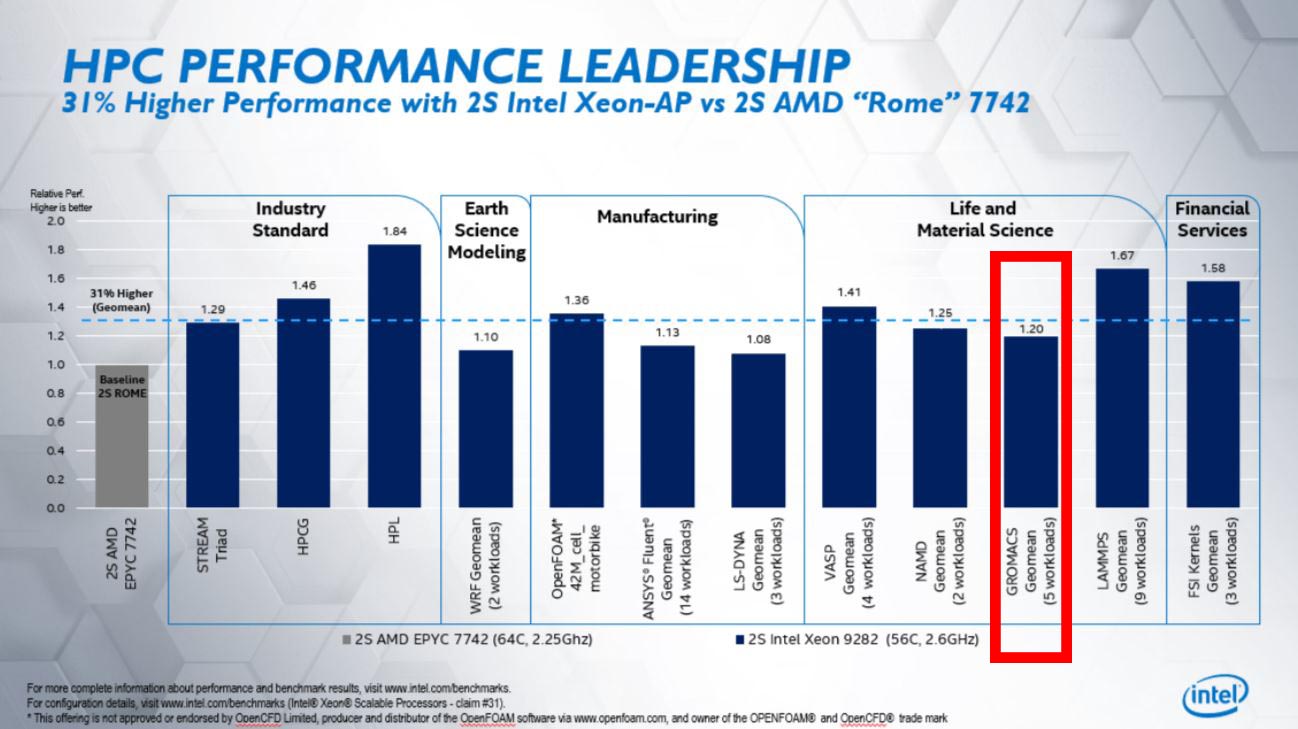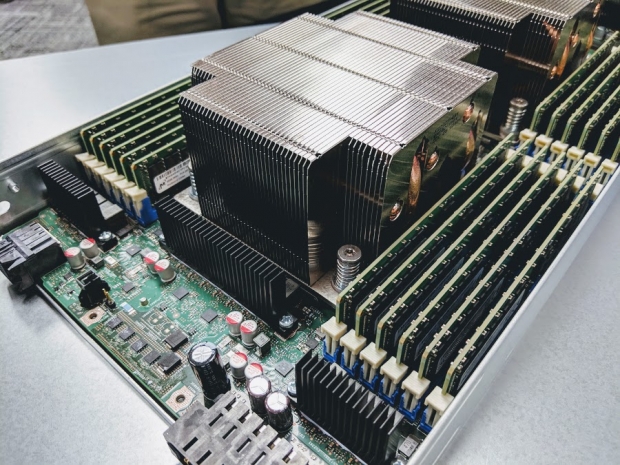However, when Serve the Home checked the figures it found that some of the numbers seemed to be presented to "intentionally mislead would-be buyers as to the company’s relative performance versus AMD".
Intel presented the figures at its “Performance at Intel” Medium blog.

However a 400W 56 core part seemed to say it was 20 percent faster and a footnote on configuration details we followed eventually leading to the referenced #31 corresponding to this result. Here is the configuration for the test:
GROMACS 2019.3: Geomean (5 workloads: archer2_small, ion_channel_pme, lignocellulose_rf, water_pme, water_rf):
Intel® Xeon® Platinum 9282 processor: Intel® Compiler 2019u4, Intel® Math Kernel Library (Intel® MKL) 2019u4, Intel MPI 2019u4, AVX-512 build, BIOS: HT ON, Turbo OFF, SNC OFF, 2 threads per core;
AMD EPYC™ 7742: Intel® Compiler 2019u4, Intel® MKL 2019u4, Intel MPI 2019u4, AVX2 build, BIOS: SMT ON, Boost ON, NPS 4, 1 threads per core. (Source: Intel)
So Intel used GROMACS 2019.3. To be fair, it used the same version which makes it a valid test. But GROMACS 2019.3 was released on June 14, 2019, just after the 2nd Gen Intel Xeon Scalable series. On October 2, 2019 the GROMACS team released GROMACS 2019.4.
In GROMACS 2019.4, there was a small, but very important fix for the comparison called: Added AMD Zen 2 detection. That says: "The AMD Zen 2 architecture is now detected as different from Zen 1 and uses 256-bit wide AVX2 SIMD instructions (GMX_SIMD=AVX2_256) by default. The non-bonded kernel parameters have been tuned for Zen 2. This has a significant impact on performance. (Source: GROMACS Manual)"
In other words, it is well known that older versions of GROMACS were not properly supporting the new “Rome” EPYC architecture and it is something which has since been fixed. Intel was running the older speced software which it was designed for, but Zen 2 was not.
The team at Serve the Home found some other problems with the Intel tests, which seems to suggest its benchmarking might have been a little misleading, so it is worth clicking on the link and seeing their numbers.




